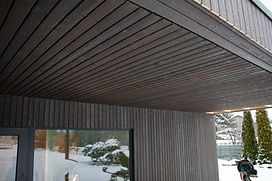
When it comes to ensuring the safety of your dog, one of the most important investments you can make is installing the right fence. A good fence not only secures your property but also creates a safe environment for your furry friend to play, exercise, and enjoy the outdoors. However, choosing the best fence for your dog can be tricky, as there are many factors to consider, including the type of dog you have, your property layout, and your budget. In this blog post, we’ll guide you through the steps to choose the perfect fence to keep your dog safe and happy.
1. Understand Your Dog's Behavior
Before you start shopping for a fence, it’s essential to understand your dog's behavior and instincts. Does your dog tend to jump over fences, dig under them, or dart through openings? Do they like to chase animals or wander off if they catch a scent? Different dogs have different needs, and knowing your dog's temperament will help you determine what type of fence will be most effective.
For example:
Jumpers and Climbers: Dogs like Greyhounds, Border Collies, and some terriers might try to jump over or climb fences. In such cases, a fence that is at least 6 feet tall is ideal.
Diggers: Some dogs, especially breeds like terriers, are notorious for digging. A fence with a concrete base or a “dig guard” system will prevent your dog from tunneling under.
Escape Artists: Some dogs, like Beagles or Huskies, can squeeze through small openings. Opt for a fence with small gaps between the slats or mesh to keep your dog securely inside.
Understanding your dog's behavior will help you choose the right fence to keep them contained and safe.
2. Choose the Right Fence Material
Once you know your dog’s behavior, you can start thinking about the materials that will work best for your property. Wooden fence come in various materials, each with its own benefits and drawbacks. Here’s a look at the most common materials used for dog fences:
Wooden Fences
Pros: A classic and attractive choice for many homeowners, wooden fences offer privacy and can be customized to your desired height. They also provide a solid barrier, preventing your dog from seeing what’s on the other side, which can reduce anxiety or barking.
Cons: Wooden fences can be expensive, and over time, they may require maintenance like painting or sealing. Also, dogs that love to chew may damage wooden fences.
Vinyl Fences
Pros: Vinyl fences are low-maintenance, durable, and resistant to the elements. They are less likely to warp or splinter, making them safer for your dog. Vinyl fences come in a variety of styles, including privacy and picket designs.
Cons: Vinyl can be more expensive upfront, and it may not offer the same rustic or traditional look as wooden fences.
Chain-Link Fences
Pros: Chain-link fences are a popular and affordable option for dog owners. They are sturdy, long-lasting, and allow your dog to see through the fence, which may reduce their desire to chase after passing animals.
Cons: Chain-link fences don’t provide much privacy, which may lead to barking or anxiety for some dogs. Additionally, dogs with strong chewing habits might damage chain-link fences.
Wrought Iron Fences
Pros: Wrought iron fences are highly durable and can be an attractive option for homeowners who want to keep their dogs safe while adding a touch of elegance to their property. These fences are typically strong enough to keep larger dogs in.
Cons: They tend to be more expensive, and the gaps between bars might be large enough for smaller dogs to slip through.
Electric Fences
Pros: Electric fences are a modern solution for dog owners who don’t want to build a physical fence. They use a collar that delivers a mild shock when the dog crosses the boundary. They’re effective for training and containment.
Cons: While they work for many dogs, electric fences can be controversial, and they don’t prevent other animals from entering your yard. Plus, they don’t provide any physical barrier to keep intruders or your dog away from dangerous areas like roads.
3. Consider Fence Height and Design
The height of the fence plays a crucial role in your dog’s safety. If you have a dog prone to jumping, you should invest in a taller fence. Generally, a fence should be at least 5 to 6 feet tall to prevent most dogs from jumping over. If you have a smaller breed or a dog that doesn’t jump, a shorter fence might suffice, but keep in mind that some breeds, even small ones, can be surprisingly agile.
In terms of design, it’s important to think about visibility. While some dogs may prefer privacy, others may feel more comfortable being able to see through the fence. Consider whether your dog will feel safer with a solid, opaque fence or one with openings like chain-link or wrought iron.
4. Secure the Bottom of the Fence
To prevent your dog from digging under the fence, ensure that the bottom is properly secured. If you're using a wooden or vinyl fence, you might consider adding a buried mesh or wire at the base of the fence. This will prevent your dog from tunneling underneath and escaping. Alternatively, you could install a "dig guard" system, which extends the barrier into the ground to discourage digging.
If you already have a fence and are concerned about digging, consider laying a gravel or stone border at the bottom to make it harder for your dog to dig.
5. Budget and Maintenance
Fencing costs can vary widely depending on material, size, and installation. Wooden fences are generally cheaper upfront, but they require regular maintenance. Vinyl and wrought iron fences tend to be more expensive initially but are low-maintenance in the long run. Chain-link fences are often the most affordable option, but they may not provide the privacy some dog owners desire.
Consider your budget and how much time you're willing to invest in fence maintenance when choosing a material.
6. Consult a Professional
If you're unsure about the best fence for your dog’s safety, it’s always a good idea to consult with a professional fence installer. They can help you assess your property and provide expert recommendations based on your dog’s behavior and your specific needs.
Conclusion
Choosing the best fence for your dog’s safety involves considering your dog’s behavior, the material that suits your budget and aesthetic preferences, and the proper height and security features. A well-chosen fence will not only keep your dog safe but also give you peace of mind. Whether you choose a traditional wooden fence, a durable vinyl fence, or a practical chain-link fence, the right fence is an investment in both your dog’s well-being and your property’s security.


.jpg)
Write a comment ...